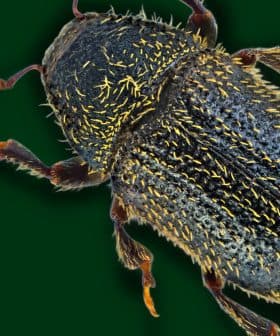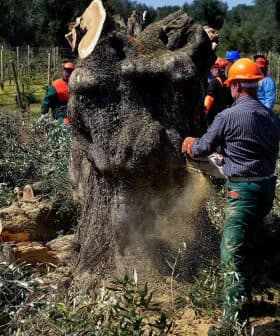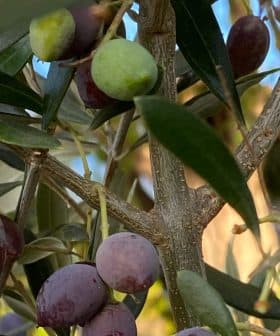Genotype Plays Significant Role in Fatty Acid Content of Virgin Olive Oil

Researchers from Córdoba and Madrid have determined that the main causes of variability in the fatty acid content of virgin olive oils are due to the genotype of the olive cultivars and the impact of different climate conditions. The study, published in Food Chemistry, will help contribute to future olive breeding programs aimed at producing healthy and high-quality olive oil.
Researchers from Córdoba and Madrid, in Spain, have identified and measured the main causes of variability in the fatty acid content of virgin olive oils.
The study published in Food Chemistry shows that most differences in virgin olive oil fatty acids profiles are due to the genotype of the olive cultivars. Lesser but significant variability also comes from the impact of the different climate conditions.
According to the scientists, their results will contribute to future olive breeding programs to obtain cultivars meant for healthy and high-quality olive oil production.
See Also:Researchers Evaluate 12 Olive Varieties for Drought Tolerance“Fatty acids are an essential component of olive oil. Looking at them from a health perspective, the more monounsaturated and polyunsaturated fatty acids are present in olive oil, the more the olive oil is considered healthy,” Feliciano Priego Capote, professor of analytical chemistry at the University of Córdoba and co-author of the study, told Olive Oil Times.
The fatty acids profile, which measures the proportions of the different fatty acids, also impacts olive oil stability. “A higher presence of monounsaturated fatty acids suggests higher stability of olive oil against oxidation and chemical alterations that can deteriorate the olive oil properties,” Priego Capote said.
The researchers collected virgin olive oil samples from 45 cultivars from three consecutive crop years. Another 71 samples from an equal number of cultivars were gathered across two successive seasons. All samples came from the World Olive Germplasm Bank in Córdoba.
Fatty acid
A fatty acid is a fundamental building block of fats and oils, playing a crucial role in their composition and properties. It is an organic molecule consisting of a long chain of carbon atoms with a carboxyl group at one end. These chains can vary in length and saturation levels, influencing the characteristics of the fat or oil. Fatty acids provide energy, support cell structure, aid in the absorption of fat-soluble vitamins and contribute to various physiological functions. Olive oil contains a variety of fatty acids, including monounsaturated fatty acids such as oleic acid, which is known for its potential health benefits.
The researchers evaluated the significant differences among the fatty acid samples from different cultivars. They also measured how significant the variation of these fatty acids profiles was from one season to the next.
“We found that the most significant factor [in determining olive oil fatty acids profile] is the cultivar,” Priego Capote said. “We can say that there is a genetic predisposition that marks the olive oil’s fatty acids profile as a function of the cultivar.”
The genotype accounted for 56 percent of the total measured sample variability.
While previous research suggested a modest interannual variability, the Córdoba study reached different conclusions.
“What we found is that there are significant variations in the fatty acids profile in consecutive years,” Priego Capote said. “Those can essentially be explained by climatological conditions.”
A relevant example of this effect is the impact of accumulated precipitation on the variability of fatty acids. The researchers measured precipitation volumes from June to October across the different crop seasons, all characterized by similar high temperatures.
“Accumulated precipitation has a significant effect on the concentration of monounsaturated fatty acids and polyunsaturated fatty acids,” Priego Capote said. “We observed that the lower the volume of accumulated precipitation in those months, the lower the monounsaturated fatty acids found in the samples. Saturated fatty acids and polyunsaturated fatty acids were instead found in higher concentration.”
By analyzing the differences among samples in the different years, the study also identified a cultivar-per-crop year effect which impacts 25 percent of the total fatty acids variability.
“Essentially, it means that not all cultivars evolve in the same way through the years, not all respond to the same variations in consecutive years,” Priego Capote said. “For instance, some cultivars decrease monounsaturated fatty acids in their second crop year while others increase them. That means that there are additional factors which can affect a particular cultivar to a greater extent.”
The new research did not specifically evaluate the environmental effect on fatty acid variability.
“In previous research, we have seen how the location of a tree can trigger some fatty acids variability,” Priego Capote said. “For instance, we have seen that the elevation above sea level can impact the fatty acids profile.”
“The three factors to be considered in measuring variability are, therefore, genetics, interannual variability, which is essentially linked to climate, and environment,” he added.
By identifying how the fatty acids profile will change through time, in addition to precise data about olive oil polyphenol content, researchers believe it could become easier to predict the durability and stability of the final product.
“Given their differences, we should probably say that not all olive oils should have the same best-before-date,” Priego Capote said.
“In another paper, our team found a formula combining olive oil’s fatty acids profile and phenolic profile to predict the Rancimat response, which is a test for the evaluation of stability,” he added.










